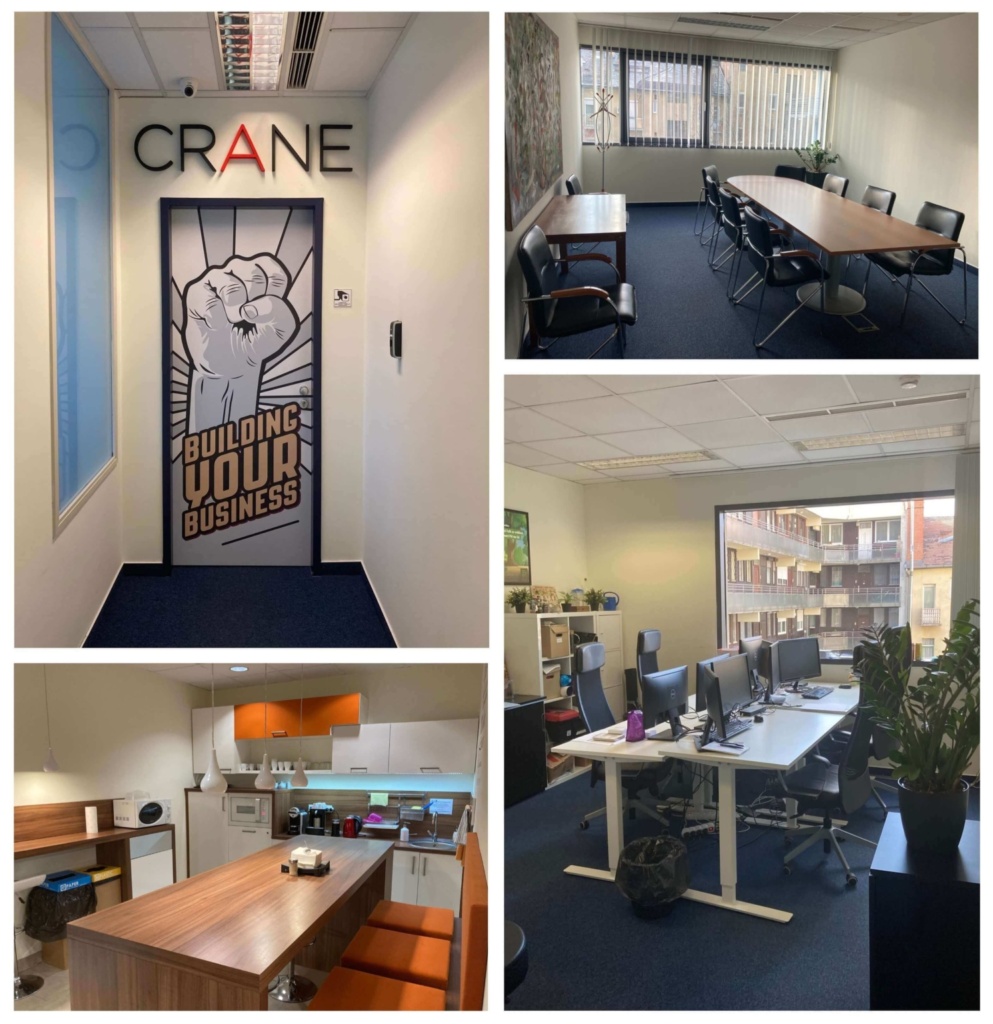At CRANE, it is important for us to take responsibility for our environment, and minimizing our carbon footprint is a crucial step in this. How have we done this? József Bodnár, Managing Director of CRANE, tells us all about it!
When and to what cause did the idea sprout that Crane needs to reduce their carbon footprint?
We have always valued environmentally conscious living, whether it be in our personal lives or in the workplace atmosphere. For instance, I deliberately chose renewable energy sources to power my home when building on my house began about ten years ago; as a result, it was intended that we would pay equally as much attention to the environment around us and to our colleagues in our work lives. We furthermore support our workers in becoming more eco-friendly.
What was the first step?
Truth be told, we need to travel way back into the past to be able to give a valid answer. In 2009, as CRANE started a phase of expansion, we relocated to a new office building where it was already expected to do things such as separate paper from plastic when disposing waste. In addition, we too have been making conscious efforts to come up with viable solutions for being more eco-friendly: we handed out public transport passes to our colleagues, thus supporting the use of public transport or bicycles instead of travel with car when commuting between the office and their home. We furthermore encouraged our colleagues to come up with some additional options and share them with us. There were plenty.
In which areas did you involve change in order to reduce carbon footprint?
To begin with, we bought a bunch of electric scooters. This was back when electromobility was fairly new to the world. As a result of this, not only was this something new and enjoyable, but it was a step closer to carbon conscious operations. A lot of our colleagues had the opportunity to also use the electric scooters outside the city. Many of those who do not live in the city switched from car to train and to the scooters, which they could use to come from the station to CRANE and back.
Many also come in with scooters from the suburbs. We still have this fleet to this day, furthermore there is now a CRANE app (an application that exists for the colleagues) where they can reserve the scooters, the protective gear, and more. It’s great fun!
Another big step towards reducing carbon footprint was the introduction of flexible working hours and on top of that we launched home office years before the pandemic hit.
CRANE’s fleet of electric scooters
Please give us some more details! What impact did the operational changes have on the reduction of CRANE’s carbon footprint?
We recognized that besides being able to efficiently work from home, the environment is also less burdened, if we don’t expect our colleagues to work exclusively in the office. Consequently, we redesigned our infrastructure to support home office before COVID hit. First it was an experimental phase for the colleagues to stay home once a month, then evolving into once a week, but seeing the results we agreed to work one day each week from home.
Then came the pandemic. We went from one day a week to five, albeit the transition was smooth since the required infrastructure and knowledge was already acquired.
An equally big step CRANE made was moving from our beloved Loft office into a new one that is more ideal for home office and where we can continue minimizing our carbon footprint. Our new office was scaled down to an optimal size which ensures us only using the necessary amount of space. Unfortunately, our previous landlord did not support our vision. We searched for a long time for the best solution, since in our business data- and information security is of utmost importance, and this sets crucial expectations for the work area as well. Fortunately, through a service called serviced office, we were able to find the optimal solution. Here we have a space dedicated to us nonetheless, the communal spaces like the reception, the kitchen, the dining area, and the meeting rooms are shared with all renters.
Over and above that, during our swap to home office, we updated our traditional workstations (which conclude desktop computers and monitors) to more favorable energy consuming mobile devices.
CRANE’s new office optimized for home office
From an environmental perspective, what advantage did the changes have?
For one, the smaller office space comes with a significantly less energy consumption. The shared use of communal spaces furthermore decreases the carbon footprint of the place, which is something a traditional, representative office space with separate kitchens and dining areas and meeting rooms could hardly do. Additionally, we work with our colleagues in a rotation system where on our office days (colleagues come in twice a week with their team) they can get together, but we leave Fridays free. As an outcome, we only use heating, cooling, and electricity for four days a week and when we do, it’s limited to how many people came to work. Naturally, when we aren’t in for work the heating, cooling, and electricity is shut off and the colleagues make a conscious effort to turn off the lights in the office when they head home. According to our calculations, thanks to this, our energy consumption decreased by almost a third compared to our previous office. Quite noticeable.
On the office days you still have to take into consideration the ‘commuting’ carbon footprint. Do you have any solutions?
First and foremost is that instead of 5 days a week, we only have to worry about that question on 2 days a week. And to me that means an immense reduction of carbon footprint.
What’s more is we encourage colleagues to not use cars when coming to work. Those who arrive on bikes can utilize the office’s communal shower, the changing rooms, and even a highly secure bicycle storage. From the perspective of using public transport getting to the building is relatively straightforward and easy, in addition, those who prefer to travel with the electric scooters are still able to.
How well does CRANE’s resources align with the moral of lower carbon footprint?
A mobil munkaeszközök karbonlábnyoma közel 80%-kal kisebb, mint az asztali munkaállomásoké. Mivel mindenki ilyet használ, ha ezt a teljes létszámra vetítem, az már önmagában komoly karbonlábnyom csökkentésnek mondható.
How green is CRANE?
We have done a lot to be just that. Afterall, we didn’t stop on the cusp of becoming green. For us, as well as become even more green, it is paramount to help others in becoming green too with our knowledge and resources.
Considering that, we built our own carbon portfolio, which in a broader sense concludes our support in helping the marketing and communication professions in measuring their own carbon footprint. And when they can measure it, we can help them in how to reduce it.
I would like to highlight the website (carbon.crane.hu) where we showcase our services to our clients and partners. This website was already created with the thought in mind to be the greenest it can be and soon enough our other websites will follow in its footsteps. When the website was ready, we weren’t pleased with the results and so we kept at it until we reached a value that we believe is acceptable. This website is currently greener than 70% of all measured websites from around the globe.
What kind of feedbacks come from colleagues?
Positive. As I mentioned before, our colleagues came, advised, asked, and did for a greener environment. The fact that we are taking this matter to the next level by working on this topic on a product and service scale, our colleagues who directly worked in this area are noticeably elevated and proud to say that we are dealing with carbon footprint.
Is there any area left where you want to reduce your carbon footprint?
There always is. For example, we measured CRANE’s carbon footprint from last year with the help of a consulting firm, ZeroKarbon to see where we’re at. Even though we are doing well in this area, having made great efforts and have environmentally conscious thinking, there is always room for improvement.
In our case, we are seriously determined about this. until the end of the year, we would like to make our operation fully carbon free, which would be outstanding compared to our business rivals. As a short-term goal, we aim to bring all our services close to a zero-carbon value. Naturally the main motivation behind this is to produce less carbon, though the carbon we cannot avoid generating, we offset in an environmentally friendly and realistic way.
And once we are done with that, we encourage and assist most of our clients in doing the same. At least in the marketing and communication sector.










Comments are closed.